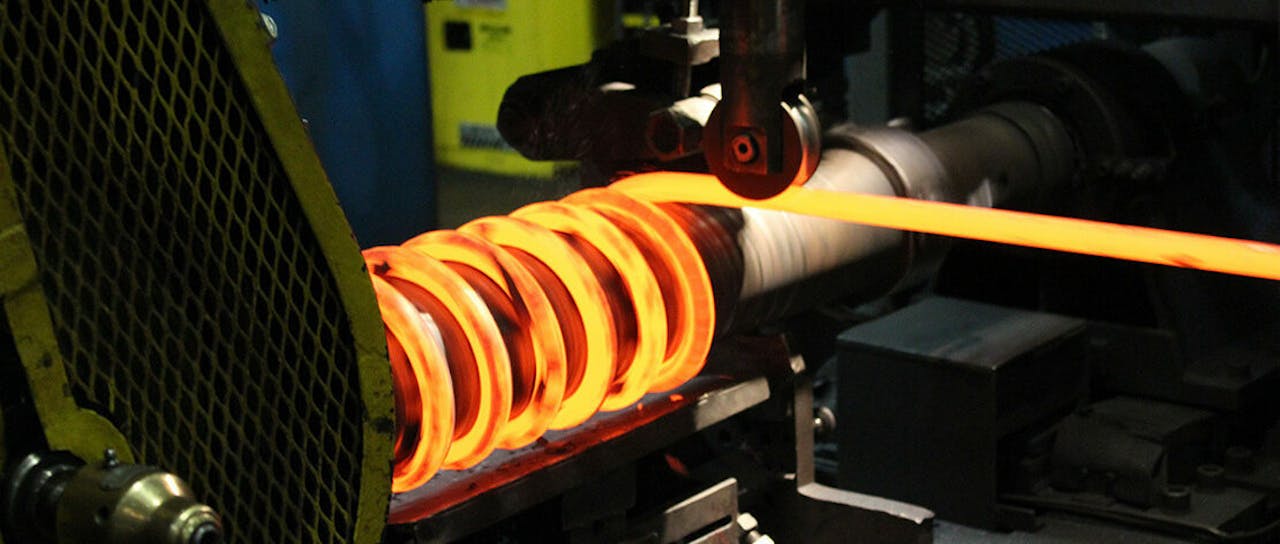How Coil Springs Are Made
Springs come in a wide variety of sizes and configurations depending on their desired use. Some of the types of springs include leaf springs, Belleville washer springs, clock springs, constant force springs, and helical coil springs. MW Components specializes in manufacturing helical coil springs from high-quality U.S. steels.
The most common types of coil springs are compression springs. These springs store energy which can be measured through an increase in the load or force required to compress them. Other types of coil springs include torsion springs, which increase in load with radial loading, and extension springs, which increase in load as the spring length is increased.

The Difference Between Hot Wound & Cold Wound Springs
Coil springs can be manufactured through either cold wound or hot wound coiling processes.
Hot Wound Springs
In hot wound coiling, the material is heated to austenitic temperatures of over 1550F, formed on the coiler, and then quenched in oil to form martensite. Next, the springs are tempered to change the microstructure to a tempered martensite which provides strength to achieve the desired spring performance and ductility to withstand the operation. Hot wound coiling is usually for larger bars sizes over 0.500” (12 mm). MW's Greer location can coil bars up to 3.00” (75 mm) in 5160H, 51B60H and 4161H material. Additional materials, such as Inconel and Stainless Steel, can be coiled through hot winding, but these materials are not included in our standard raw material inventory.
MW Components utilizes a continuous heat-treating process to manufacture hot coiled springs. Every bar and every spring in a lot goes through the entire length of the furnaces. This means that each bar, and therefore each spring, gets a consistent heat treatment and is not dependent on its position in the furnace. This is a distinct advantage over batch processes where each spring receives a different heat treatment depending on where and when the material is placed in the furnace.
Cold Wound Springs
Cold coiled springs are made from fully heat-treated material and then stress relieved to remove the stresses induced during the coiling process. MW Components - Greer: Springs can coil up to 0.625” (15.8 mm) in Chrome Silicon and Oil Tempered Wire. MW can also coil high tensile Chrome Silicon to 0.437” (11 mm) and in 2019 we will extend our range for high tensile Chrome Silicon over 0.625” (15.8 mm).
Choosing the Right Coil Spring
Specifying the right coil spring comes from understanding your product, how it operates and where it operates. MW Components manufactures your spring for your application. Our staff will help your engineers understand the impact of the design constraints and share insight into ways to make your coil spring better. Therefore, the earlier we help in your design process, the better your coil spring will perform in your specific application.
Learn more about the coil spring manufacturing process in our Technical Guide.
Can Coil Springs Be Welded?
Due to the critical nature of the metallurgy of coil springs, we will never recommend that a user weld on or to a coil spring. The welding will heat the spring material and damage the grain structure and alter the local metallurgy of the spring. Additionally, due to the chemical composition of the spring steel, the weld will not fully integrate with the spring steel and will fail easily.